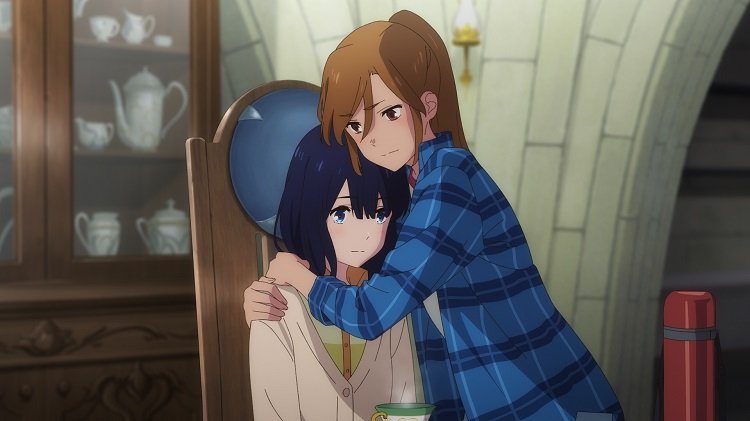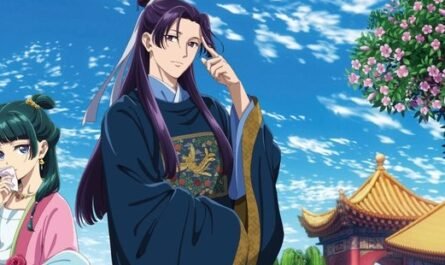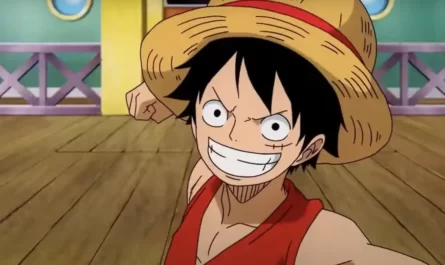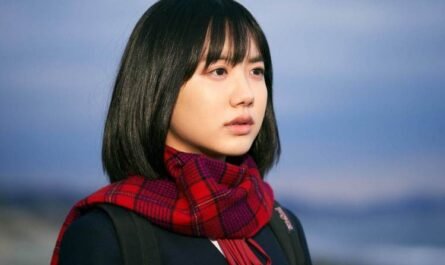Mitsuki Tsujimura’s “Kagami no Kojo,” which won the Bookstore Grand Prize, has garnered support across generations as a bestseller. Seven junior high school students, including the main character, Kokoro, who have lost their place at school, are drawn into a mirror one day and invited to a castle towering over the sea.
So they were given a room in the castle where they could make any wish come true, and only one person who found the key to it could make it come true. The secret to its popularity is the skilfully pasted foreshadowing and the culmination of the final fold. It was released in theaters on December 23rd and has already generated a lot of buzzes.
The decision to make Kagami no Kojo into a theatrical anime was big news. Still, the director was also appointed as the director of Crayon Shin-chan Arashi Calling His Appreciation! It is also attracting attention that Keiichi will serve. So how did the director, who has won many film awards at home and abroad, tackle this work? We interviewed director Keiichi Hara.
The movie “Kagami no Kojo” official website https://movies.shochiku.co.jp/kagaminokojo/
This time, you worked as a director on the theatrical animation adaptation of Mitsuki Tsujimura’s best-selling novel Kagami no Kojo. How did this project start, and why did Director Hara accept the work?
I received a request from Mr. Hirotaka Arakaki, who is producing this work at Hara Director Shochiku. He was also involved as a producer for the first time when I was working as a live-action film director at Shochiku for the first time. Mr. Arakaki has been making live-action films for a long time, but he has teamed up with Nippon Television to turn this original into a theatrical animation. At that time, I was told, ‘I want you to accept the director.’ I replied, “I will.”
“Kagami no Kojou” is based on a novel and has also been made into a stage play and a comic. How did you think it should be portrayed in animation this time?
It won the Hara Director Bookstore Grand Prize and has sold 1.7 million copies. That’s why I first thought I had to make it into a movie not to disappoint those who read the original. First of all, how much can I draw Sanada, a classmate of my heart, cruelly? I thought it was the liver. If you can’t draw Sanada correctly, the audience won’t be able to empathize with him.
This time, many junior high school students are the main characters, but how does the director perceive the age of junior high school students?
Director HaraThat’s right. What is it? Isn’t junior high school the most ambiguous age? Being seen as an adult or being seen as a child. It’s an age where individual differences are widening. Some junior high school students grow up quickly, and some grow up late. It would be great if I could bring out that kind of atmosphere in the film.
Are there any characters that you have a special attachment to?
Director Hara, it’s Aki, after all. He’s the one with the heaviest burden on his back. Aki’s expression was complicated, but at the same time, it was a lot of fun. You’re a very complex child, aren’t you? As a director, drawing such characters takes a lot of skill. It felt like his arms were snapping.
However, I was thinking about what kind of play would be attached to it. I got goosebumps when I heard the voice acting of Sakura Yoshiyanagi, who plays Aki, during the dubbing. “very.”
In what way?
Director Hara No, I thought it was Aki. In terms of his skill, he was already outstanding. Aki is frustrated and sad and has a crying scene where she has to express negative feelings, but the play is lovely.
Movies are sure to be watched by many junior high and high school students, and what kind of message do you want to send to those people?
Mr. Tsujimura, the original author of Hara, chose the problem of being isolated at school as one of the themes of his creation. Mr. Tsujimura said he didn’t enjoy his school days very much, and that’s why he can write stories like this now. The message of such a person will reach the same children. I wanted to know if I could adequately fulfill my role as an intermediary to hand over such messages in the form of images.
Was it conveyed as a video?
Towards the end of Hara’s film, there is a quiet conversation scene in which a neighborhood girl named Tojo, who hadn’t spoken to Kokoro for a long time, talks while eating ice cream for the first time in a while. I like that kind of scene.
Something can be conveyed through casual conversation or by not speaking. There are many ways to make things that are correct to explain everything now, but I think silence is necessary after all. That’s why Mr. Tojo says, “I’m sorry,” and Kokoro says, “It’s okay.” I like that you perform











